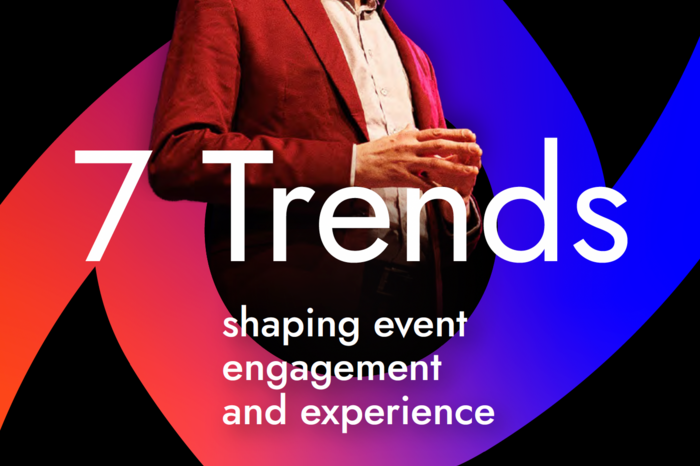
Understanding through empathy
Juliano Lissoni, Managing Director of MCI Canada, explains Design Thinking as a process deeply rooted in understanding the user's experience. "It's all about stepping into the shoes of the user to solve problems in innovative ways," he says. This approach is not just about being creative but ensuring that solutions profoundly resonate with the end-users, who can vary widely from internal-meeting participants to members of a target market engaged through a communications strategy. The emphasis on empathy is a cornerstone. As Lissoni notes: "We start with personal interviews to truly understand the user experience”, highlighting the significance of gathering comprehensive insights to inform the development of solutions.
A methodical approach to innovation
The methodology adopted by MCI Canada, inspired by MIT's brainpower, integrates perspectives from people, technology, and business to ensure solutions are well-rounded and effective. Lissoni’s Design Thinking process - Empathise, Define, Ideate, Prototype, Test - ensures that there is a crucial movement from understanding to actionable solutions:
- Empathise: We start with personal interviews to truly understand the user experience. When we conduct 10 interviews, we're able to uncover around 70% of what users really need from us—think of it as getting the main melodies of a song. But, if we bump that number up to 20 interviews, our understanding deepens significantly to about 90%, allowing us to catch those subtle harmonies and nuances. This depth is vital for truly resonating solutions. While more interviews might add a bit, past 20, the new insights start to taper off, so we aim for that sweet spot to ensure we're getting the most valuable feedback without overdoing it.
- Define: After interviews, we categorise the information into needs: primary, secondary, latent. It's crucial that our approach remains focused on understanding needs rather than collecting likes or dislikes, transforming responses into "needs statements" that are specific, positive, attribute-oriented, and free from prescriptive language like "must" or "should." Design Thinking interviews are not a feedback survey, very important to understand the difference.
- Ideate: In this phase, we collaborate with clients in a workshop setting to review the organised needs. By asking "what if" for each need, we unlock a plethora of creative solutions, organising these ideas to prioritise which needs can be addressed feasibly and effectively.
- Prototype & Test: The prioritised "What ifs" guide the development of prototypes, which are then tested to ensure they meet the identified needs. This phase is crucial for bringing ideas into tangible forms that can be evaluated for their effectiveness in solving the real-world problems of the users.

The integrated nature of design thinking
Charlee Gough, Managing Director of MCI UK, offers a complementary viewpoint, emphasising the integrated and intuitive nature of Design Thinking in addressing client challenges. She asserts, "Whatever challenge our clients present our teams with, it’s crucial to ask the right questions at the right time." This perspective echoes the iterative and exploratory essence of Design Thinking, where asking the right questions - focusing on the “why”, the “how”, and the “who” - is fundamental to discovering impactful solutions.
Fostering creativity through collaboration
Gough highlights the importance of diversity of thought and cross-functional team collaboration in avoiding repetitive solutions and achieving meaningful outcomes. She states, "Empathy is a key driver of why we do what we do for our clients and their members, customers, and communities." This aligns with Lissoni's emphasis on empathy, further reinforcing the centrality of understanding the user's needs and experiences in Design Thinking.
Iterative development
Both Gough and Lissoni stress the significance of iterative feedback and prototyping. Gough notes, "We’re not afraid to challenge each other and our clients," pointing to the iterative nature of refining and testing ideas to ensure they align with the clients' objectives and the users' needs. Similarly, Lissoni discusses the Prototype & Test phase as crucial for transforming ideas into tangible solutions that can be evaluated for effectiveness.

Design Thinking in action
The application of Design Thinking within their organisations showcases a range of successes. “At MCI Canada, we've encountered numerous instances where Design Thinking has proven invaluable in addressing client challenges,” says Lissoni. He offers the following examples:
A client was facing difficulties in engaging younger demographics. Initially perceived as a disconnect, our exploration revealed a deeper need for meaningful interaction between long-time members and younger individuals. The younger generation wanted to engage, just differently.
In another case, Design Thinking facilitated an observable shift in sustainability practices, moving from a passive checklist approach to a proactive stance by emphasising essential actions before project initiation.
During a workshop with another client, we explored a need expressed by internal stakeholders. Collaborating with the client’s employees, we co-created a solution that garnered enthusiasm from the HR team for a full rollout. I recommended piloting the idea with a small group and limited resources to validate its effectiveness. Remember: test first on a smaller scale.
For yet another client, we discovered a need for faster updates to learning resources, surpassing the capacity of internal production. Through ideation, we proposed a hybrid solution involving both internally generated and licensed content, currently undergoing testing.
These examples illustrate the adaptability and effectiveness of Design Thinking in meeting specific user needs and business objectives.
The cyclical journey of creative innovation
The insights provided by Lissoni and Gough illustrate the transformative nature of Design Thinking. By prioritising empathy, embracing iterative development and fostering collaboration, organisations can navigate complex challenges and deliver solutions that truly resonate with users.
Design Thinking is pivotal in driving innovation and achieving lasting impact through a deep understanding of user needs and a commitment to creative problem-solving.
"Visualising what success looks like and then making it happen for our clients and their audiences is what we’re here for……and then we do it all again…but differently!" says Gough, capturing the essence of Design Thinking as a dynamic and iterative process where MCI offices around the world continuously seek to innovate creativity and improve upon previous solutions.
Find out how MCI can leverage Design Thinking to create the solutions your are looking for. Contact us today.





